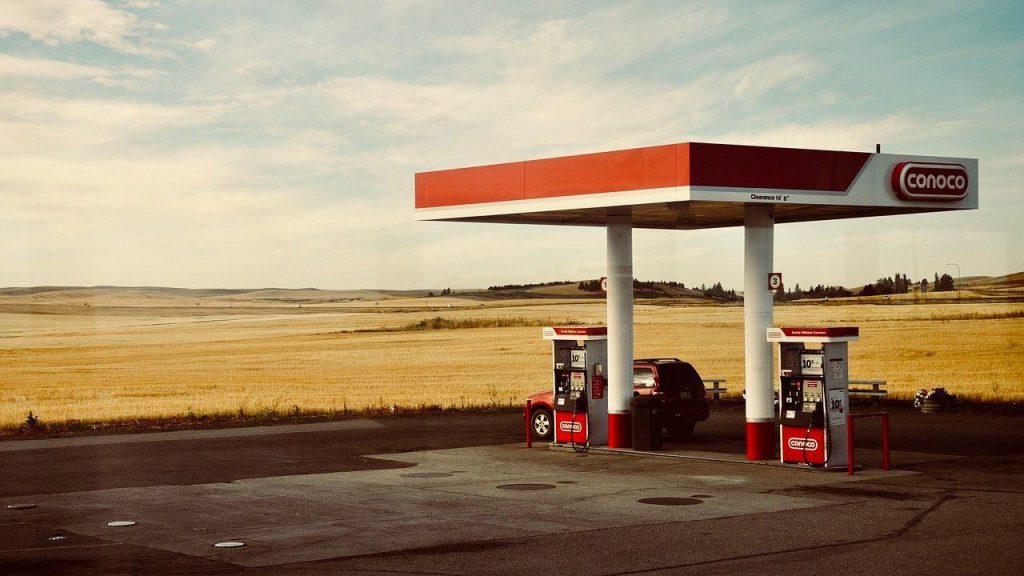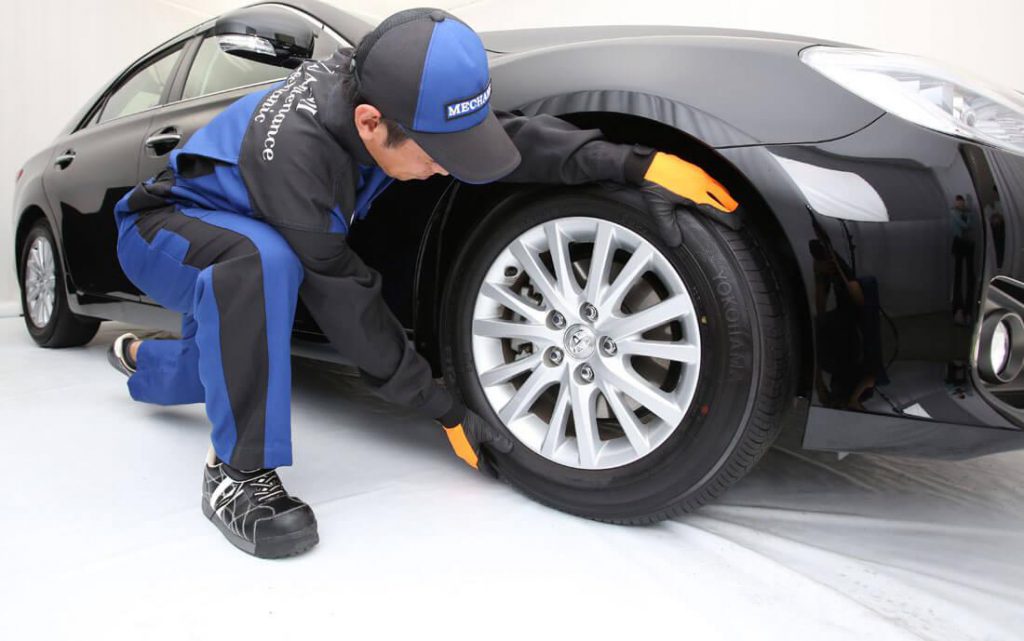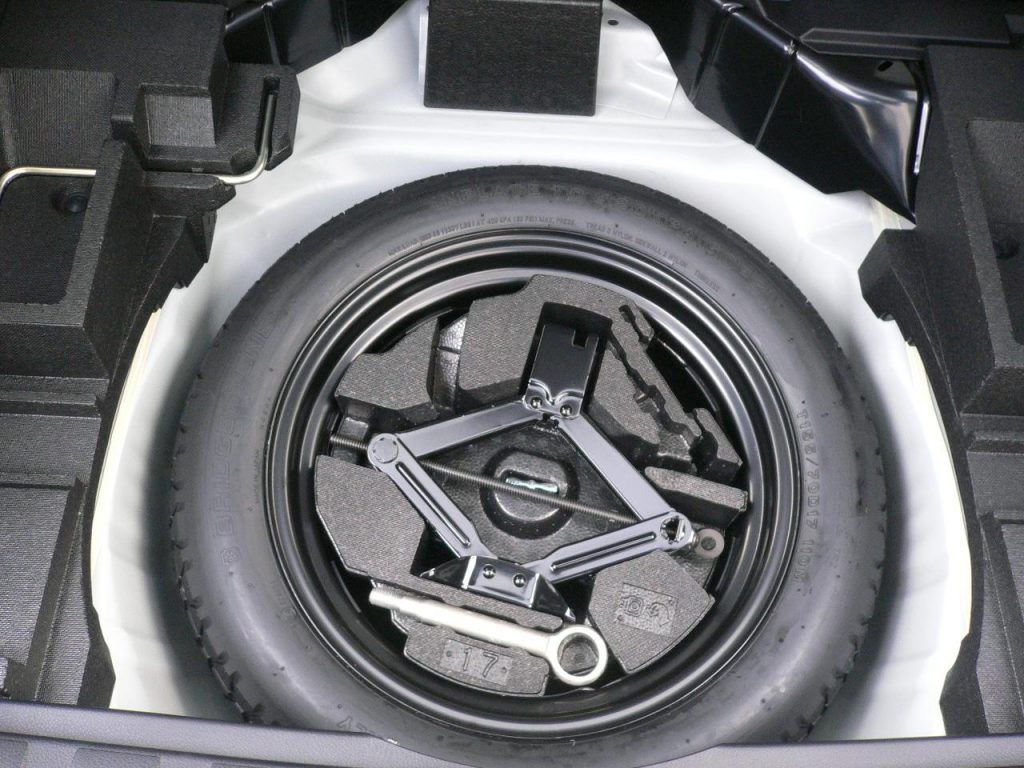JUMVEA(Japan Used Motor Vehicle Exporters Association) is the union of used car export business approved by the Ministry of International Trade and Industry of Japan.
NIKKYO is the JUMVEA certificated Safe Trade member.
作者: Eddie Yeh
車子啟動後,儀表板燈號會亮起,確認每個警告燈號都能正常運作。等待數秒後,只要行車電腦檢查無誤,這些燈號就會熄滅。不過,萬一有個燈號沒熄滅該怎麼辦?
不管是剛發動,還是開車中,引擎確認的黃色燈號亮起來,多數駕駛可能都會非常緊張。是引擎發生故障,還是周遭機件有問題?應該立刻靠邊停車打電話求救,還是能夠繼續開到保養廠再處理?
為什麼會特別提到引擎確認燈,因為其他燈號多半都傳遞很明確的訊息,但check engine引擎確認燈號代表的故障訊息,卻含許多可能的問題。
不過先記住,「確認引擎燈號亮起,不代表你要立刻靠邊停車,然後打電話叫拖吊車」。
確認引擎燈號亮起,代表你須要在合理的情況下,盡快檢查引擎。因為光憑故障燈,駕駛無法得知到底是重要機件出問題,或只是無關緊要的小麻煩。
當引擎確認燈號亮起時,駕駛第一件要做的事情,就是判斷周遭交通,是否允許停車或者緊急靠邊。因為萬一問題很嚴重,在短時間之內熄火,在一陣忙亂之後亂操作車輛,反而容易造成車禍。
第二件事情,就是試著踩踏油門,看加油反應是否仍正常。並關掉音響,仔細聆聽引擎有沒有異常敲擊聲或其他異音。同時留意車輛有無抖動、不穩定,或忽然無力。
如果有上述情形,那就代表引擎運作已經受到影響,請在路況允許下盡快將車輛停到路邊熄火,並通知等待救援。若硬要繼續行駛,可能會導致引擎無可修復的損壞。
不過大部分確認引擎的燈號亮起,其實不會有立即危機,因為這個燈號僅顯示「影響排放」的狀況。比如說燃燒不完全、廢氣中仍有殘留燃油…等等。但可以肯定置之不理的話,久了還是會出大問題的。

A chassis number is a serial number used to identify a motor vehicle manufactured before 1989. It is a series of numbers or letters attached to or stamped on a vehicle by its manufacturer. You can usually find a chassis number in the engine bay or on the chassis itself. The chassis number may also appear on the vehicle registration papers.
The chassis number is the last six digits of your car’s Vehicle Identification Numbers (VIN), so you need to find the VIN to determine the chassis number. Cars and motorcycles list the VIN in different places, so where you look will depend on the type of vehicle you have. The engine number is the number that is stamped on your vehicle’s engine. If you are having trouble finding the VIN or engine number on your vehicle, there are several places that you can check.
1.Check your paperwork

If you do not have access to your vehicle or if you do not want to go looking around the vehicle for the VIN, there are several different pieces of paperwork that should include the VIN. Some of the documents that you can check include:
2.Find the ID Plate on Your Vehicle

The ID plate is usually located on the firewall in the engine compartment or on the center pillar. You can also find the Chassis Number (VIN) on the locations below:
Japan is home to the worlds strongest manufacturers of automobiles. The names Toyota, Nissan, Mitsubishi, Mazda all speak for themselves. They are signature brands of top quality and highly reliable vehicles.Nikkyo Co., Ltd.'s primary business is exporting second-hand Japanese vehicles, trucks & forklifts to countries around the world.
Nikkyo has 3 private motor pools that measure to 60,000 sq meters.Our facilities can handle up to 3,000 vehicles at one time.



Nikkyo consists of highly trained professionals, working together as a team to help export our customer's vehicles. Our team is made up of:
Professional Vehicle Buyers
Years of vehicle experience help perform accurate inspections and spot problem vehicles. Our buyers cover ALL auctions in Japan and know which cars to buy and which cars not to buy.
Multi-National Sales Team
Our sales team can speak English, Russian, Spanish, Chinese, Mongolian, Swahili and more. Every customer has a personal sales representative assigned to handle all inquiries.
Nationally Licensed Auto Mechanics & Bodywork Specialists
Nikkyo can handle oil changes to full engine overhauls. We provide a full line of servicing options, tuning and bodywork.
Parts Department
Full service parts department capable of providing quotations and fast air/sea delivery on any part you need.
Veteran Logistics & Shipping Department
For fast delivery and mistake free documentation. We can transport vehicles from Japan to anywhere in the world!








Nikkyo's private motor pool, located in Ibaraki, Japan, measures over 60,000 square meters and can handle over 3,000 vehicles at any given time. Our yard is equipped with the following facilities:
Article Written By Jaden El Kadiri © 2020-04-15
1.Аккумулятор
Из-за часто включенного обогрева салона, запуска холодного двигателя влекут негативные последствия. Поэтому с наступлением весны необходимо провести профилактические мероприятия.
Проверьте уровень заряда батареи и почистить клеммы от окислов и налета. Если аккумулятор уже несколько лет – замерьте уровень электролита. Следует помнить, если количество электролита уменьшилось не из-за испарения, а из-за утечки или разбрызгивания оного, то нужно подливать электролит, а не воду.

2.Масло двигателя
Замену масла весной проводить не следует. Разумеется, если у вас не дизельный мотор. Для таких агрегатов специалисты советуют проводить замену строго по сезонам. Для обычного бензинового двигателя, в котором используются современные синтетические и полусинтетические масла, менять масло лучше по пробегу.

3.Технические жидкости
Вне зависимости от времени года и условий эксплуатации регулярно проверяйте объем антифриза в бачке, тормозную жидкость и прочие технические жидкости. При низком уровне долейте до необходимого уровня. Помните, что какие-то виды жидкостей надо мерить на остывшем двигателе, а некоторые на прогретом.

4.Замена шин
Замена зимней резины на летнюю имеет важные особенности. Ночью могут быть заморозки, изменение температуры приведет к гололеду.После установки летных шин проверьте надежность затяжки болтов колес, давление баллонах.

Nunca se sabe quando nossos carros podem nos deixar na mão, por isso é sempre bom andar preparado. Aqui vai uma lista de ferramentas (itens) essenciais ou extremamente úteis que poderão lhe salvar em caso de problemas .

1 – Kit para Troca de Pneus
Ande sempre com o macaco hidráulico, chave de rodas, triângulo e claro, o pneu sobressalente em seu carro. Estes são itens essenciais em sua viatura.

2 – Cabo para dar Carga na Bateria
Muitas vezes podemos esquecer uma luz dentro do carro acesa por muito tempo, ou algum outro acessório eléctrico do carro em uso enquanto o motor esta parado por muito tempo descarregando a bateria.
Se tiver um cabo de carga em seu carro, basta solicitar a alguém passando de carro no local que lhe deixe puxar carga para uma partida e pronto, uma vez o motor em funcionamento, o alternador fará o serviço de recarregar a bateria.

3. Ferramentas Básicas
Sempre bom andar com um kit, mesmo que simples, de ferramentas, com duas chaves de fenda (+ e -), um alicate universal e um alicate pequeno de ponta. Muitas vezes precisa apenas apertar um parafuso para que seu problema seja resolvido.
ITENS ÚTEIS.
Se possível, sempre ande com estes itens em seu carro, também poderão lhe tirar de um sufuco.

4. Fusiveis
Sempre leve fusíveis extras em seu carro, pois são fáceis de queimar, e pode perder muitas funcionalidades do carro caso aconteça. São extremamente fáceis de repor.


5. Fitas Adesivas e Braçadeiras de Plástico
Parece até brincadeira, mas uma fita adesiva ou a braçadeira plástica pode fazer um reparo temporário até que encontre um mecânico para efetuar o reparo definitivo.
Com estes itens em seu carro, com certeza estará bem preparado para diversos contratempos que possam aparecer. Nunca se esqueça de procurar um mecânico experiente após fazer um reparo temporário, para que possa usufruir mais tempo de sua viatura.
Articled Written By Saito Martins Rodrigo © 2020-03-11
Photographing the car for your listing is an important part of the sales process. These photographs will give buyers their first impression of the car.
Like anything you're selling, you need photos to show off your car in the best possible way. Check out this comprehensive guide to to help you do this. Photoshoot Guidelines
The best shots for showing off your car are:
Other photo taking tips include:
Want to import a car from people who know their stuff? Visit www.nikkyocars.com to get in touch or see our range of stock direct from Japan.
Article Written By Daniel Wise © 2020-02-03
There are some parts in your car that require you to pay constant attention, as their shelf life may be less than other parts of the car, or be affected by several other factors that the car is exposed to permanently while walking on the roads, among those parts is the car tire.
Like all other parts of the car, the car tire has a specific life span that may be affected by driving conditions. Rugged and difficult, so the life of your car's tires will definitely be affected by your driving style and the conditions under which you drive.
Therefore, it is natural that the shelf life of your car tire is different from that of your friend's car, for example, since in addition to driving conditions and style, each type of rubber is different from the age of its counterparts in the market, each company recommends changing the tire in different periods of the other, so the answer to the question of changing the car tire after how many kilometers will not be completely accurate.
Do my tires really need replacing?
Some mechanics and tire men will tell you your tires need replacing by simply looking at them and telling you they're worn.
Don't take their word for it, check them yourself. Visually inspect them for wear and damage, and check the depth of the grooves.
You will have to change it after an average cut of 30,000 km to 60,000 km, or after about three to five years of continuous use have passed, whichever comes first.


In all cases, after you know how many kilometers the car tire needs to be changed. You should check them periodically, especially when you are on a long road trip with the family.
All of these preceding signs can be observed easily during a simple examination of the rubber tires, and upon seeing one of them you must replace the tire with a new one, to maintain a safe driving experience for you and your family.


And you can choose the right rubber for your car by referring to your car manual, to view the pages dedicated to the rubber model of your car and its sizes and even the types suitable for it from a large variety and variety provided by the rubber manufacturers in the current market. Or you can find out the dimensions of the rubber with a sticker attached to the inside edge of the driver's seat, and you will also find the appropriate air pressure and the percentage of load capable of carrying it on the same label.
You can also translate the codes written on the car rubber itself, where you will find that there are numbers and letters written on it, each of which means something, as it is shown in the following example 245 / 40RF19 94W:
245: Indicates the width of the tire in millimeters.
40: indicates the ratio between the height and width of the tire.
19: Indicates the appropriate rim size for the tire.
94: is the load indicator.
W: indicates the maximum speed a tire can withstand.
Article Written By Jaden El Kadiri © 2020-01-15
If you have have ever purchased fuel for your business, you know that there is a choice between regular and unleaded gasoline. There is usually a variance in price between these two, but it is important to learn the other differences between them. This is especially true if you provide fuel to customers or run a fleet of vehicles. Find out below if you are making the best decision when purchasing your fuel.

Unleaded Gas (Regular)

The most commonly used fuel for vehicles is regular unleaded gasoline (RUG). It does not have any lead compounds, which makes it better for the environment and less hazardous to your health. RUG is flammable and is a byproduct of crude oil. The octane rating for this fuel is 87, which refers to its ability to deal with improper fuel combustion in an engine.
Premium Gasoline
Regular unleaded and premium gasoline share many characteristics. Premium is also derived from crude oil and it is a combustible liquid. Octane ratings of premium gas vary, but are usually 90 or higher. Premium fuel is also called “high octane gas.” It produces less pollution and it keeps your engine cleaner, which makes it a great choice for many vehicles.
Comparing the Octane Ratings

Your car has an internal combustion engine that works by compressing a mix of fuel and air, igniting the spark plug and creating a controlled explosion. When this explosion occurs, it powers the engine and makes it possible for your vehicle to run. If the fuel mixture ignites prematurely, it will create an unstable explosion. If you hear knocking in your engine, it is likely that pre-ignition has occurred. It is more common to hear this in older cars and it will lower your car’s performance. Over time, the components in your engine will be damaged if this problem is not fixed. This is where octane ratings become helpful. They are usually a measure of how well the mixture of fuel can resist knocking or pre-ignition. The octane rating of 90 in premium gasoline means that it is able to withstand knocking just a little more than regular unleaded gasoline. This is not necessarily true for newer cars because the design of modern engines has improved performance and includes sensors to detect the issue. These vehicles can run almost as efficiently on regular gas as they do on premium.
Comparing the Price of Regular and Premium Gasoline
Its higher octane rating is what makes premium gasoline more expensive than regular unleaded. Depending on your location, the price may vary. There is a general range of a 20 to 40 cents per gallon price difference between the two types of fuel. For frequent drivers, the higher priced fuel could cost up to hundreds of dollars per year, especially if the person drives their car more often. However, fleets may be able to save money by buying this fuel in bulk because it will help prevent wear and tear.


Which is More Suitable for Your Engine?
Both types of fuel are combustible, but regular unleaded gasoline will burn faster than premium unleaded. If your engine has a low compression ratio, and it does not need to produce a lot of power, then regular is fine for your vehicle. Engines with high compression ratios will function optimally with premium unleaded. If your engine makes use of turbo charging, this is especially true.

Article Written By Ehara Jun © 2019-12-06
Find a flat, stable and safe place to change your tire. You should have a solid, level surface that will restrict the car from rolling. If you are near a road, park as far from traffic as possible and turn on your emergency flashers (hazard lights). Avoid soft ground and hills.

Apply the parking brake and put car into "Park" position. If you have a standard transmission, put your vehicle in first or reverse.
Place a heavy object (e.g., rock, concrete, spare wheel, etc.) in front of the front and back tires that you are going to change. Ensure that the jack is in contact with the metal portion of your car's frame.


Raise the jack until it is supporting (but not lifting) the car. The jack should be firmly in place against the underside of the vehicle. Check to make sure that the jack is perpendicular to the ground when you first loosen the nuts, you'll make sure that you're turning the nuts instead of the wheel.
Pump or crank the jack to lift the tire off the ground. You need to lift it high enough to remove the flat tire and replace it with a spare.
Remove the nuts the rest of the way. Turn them counterclockwise until they are loose. Repeat with all lug nuts, then remove the nuts completely.

Remove the tire. Place the flat tire under the vehicle so in the event of a jack failure the vehicle will fall on the old wheel, hopefully preventing injury. If the jack is placed on a flat, solid base, you shouldn't have any problems.
Place the spare tire on the hub. Take care to align the rim of the spare tire with the wheel bolts, then put on the lug nuts.
Tighten the nuts by hand until they are all snug. They should turn easily at first.

Lower the car without applying full weight on the tire. Tighten the nuts as much as possible.
Put the old tire in your trunk and take it to a mechanic. Get an estimate for the cost of repair. Small punctures can usually be repaired for less than $15. If the tire is not repairable, they can dispose of it properly and sell you a replacement.
Article Written By Ehara Jun © 2019-12-06
©Copyright 1995-2025 NIKKYO CO., LTD. All rights reserved.
©2025 NIKKYO CO., LTD. All rights reserved